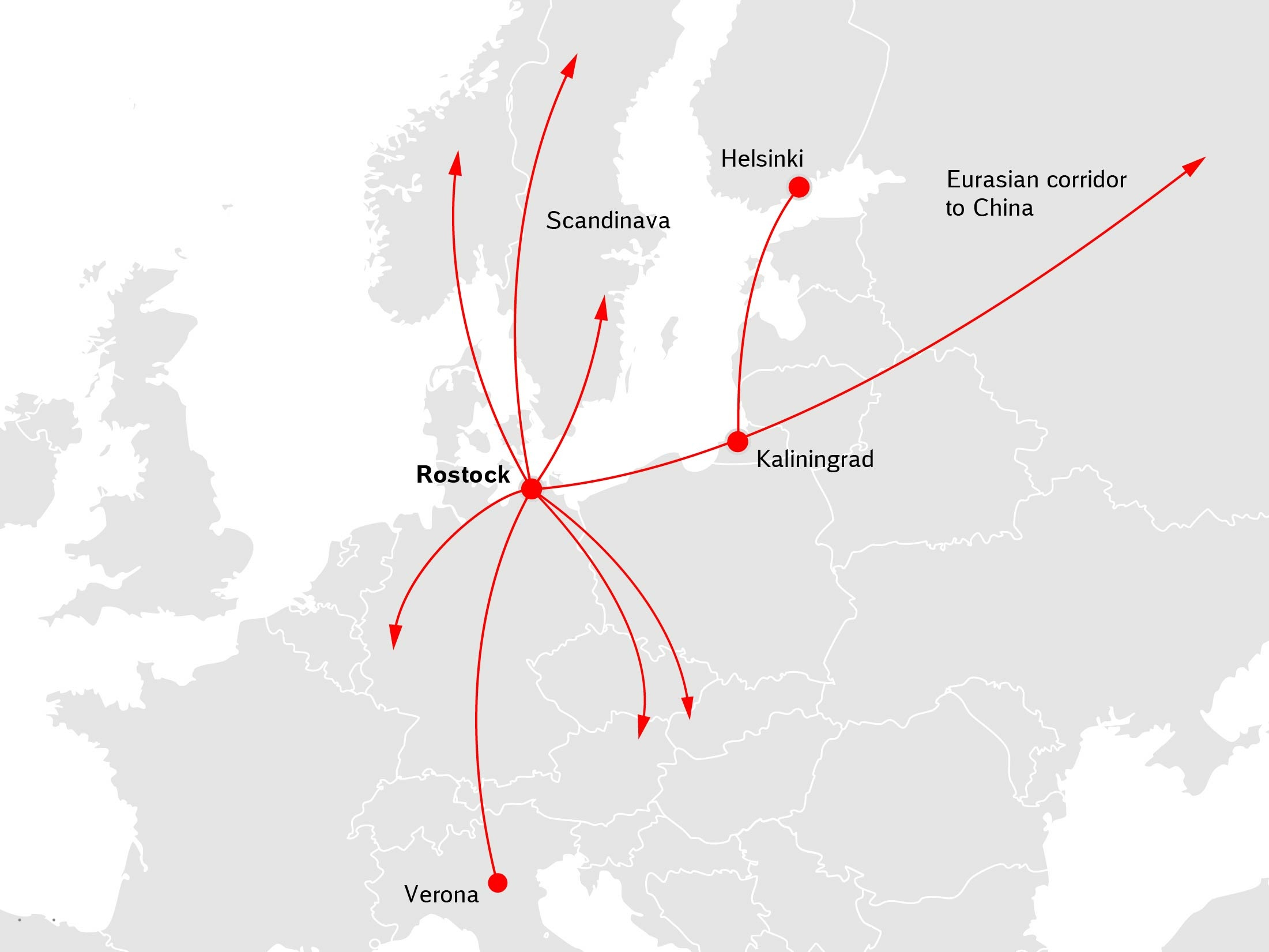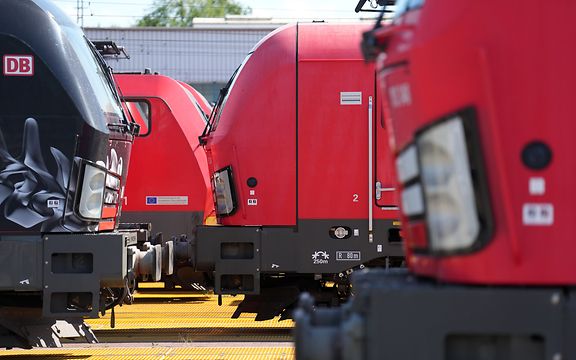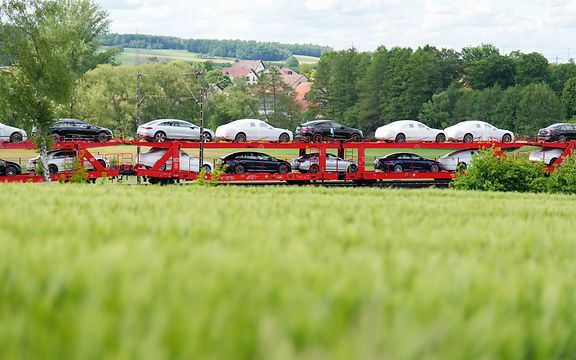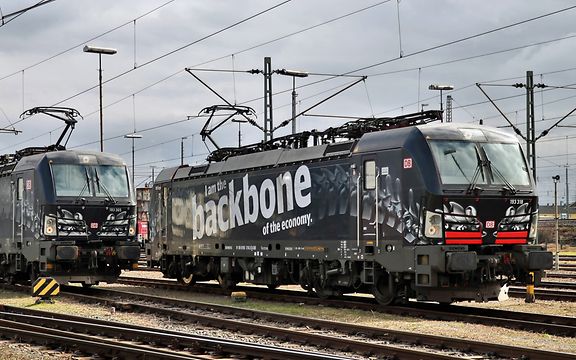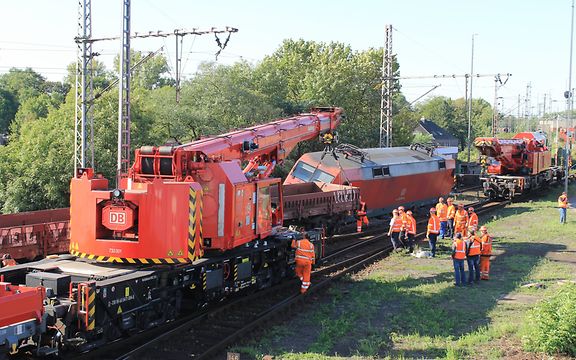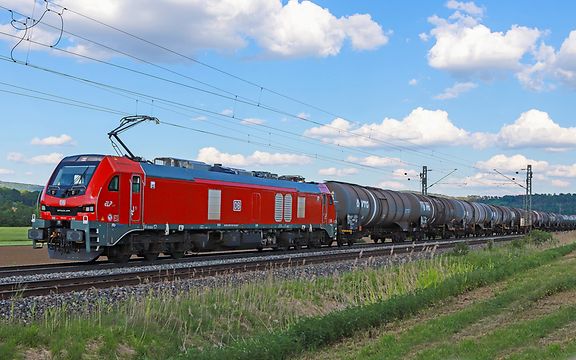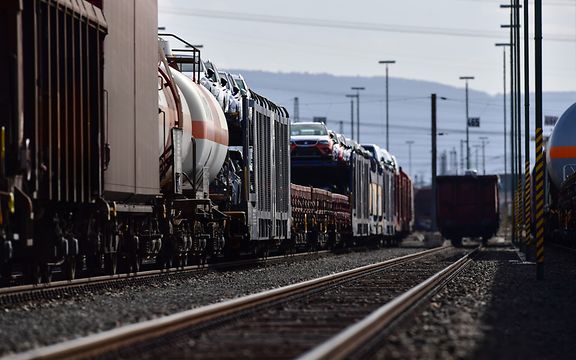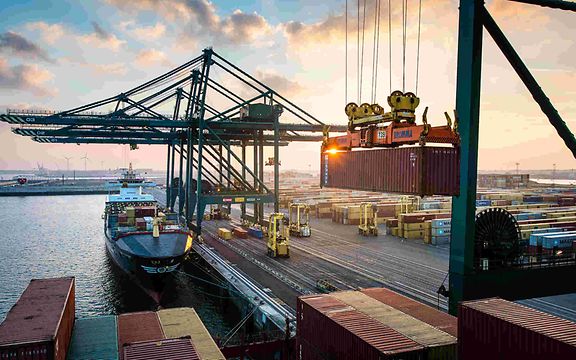Cities, countries, oceans #1: Rail and shipping come together in Rostock
A hub for DB Cargo’s intermodal and specialised services.
Rostock is one of the 110 ports in DB Cargo’s network. The Baltic port’s facilities can handle freight of every kind, allowing the city to connect the rail, road and shipping routes that transport wind turbines to Russia, containers from China, paper from Finland and so much more. In April 2020, DB Cargo Eurasia launched a new intermodal solution for a short sea route between Rostock and the Russian port of Kaliningrad, creating another link to the new Silk Road.
Rostock’s international port is a hive of activity. In 2020, its docks handled a total of 25.1 million tonnes of freight, and this figure is rising all the time. A significant volume arrives at the quayside by train or is offloaded from ships onto DB Cargo’s wagons before setting off for the port’s hinterland and a huge network that stretches from Italy to Scandinavia and from China to Duisburg. Rostock is the place where countless routes converge.
What does the term “port hinterland” mean?
To and from the east: linking up with the Silk Road
In the past, few people would have thought of Rostock when contemplating logistics chains to and from China. Today, things are different. The new Silk Road is booming and conveys an almost unimaginable variety of goods: electronics, textiles, canned tomatoes, balls of dough for bread rolls and (currently the best-known item) masks to prevent the spread of Covid-19. Much of this freight travels in containers, which Chinese logistics companies load onto trains at their end of the route. Most of the containers arrive overland, but a growing percentage use the Kaliningrad–Rostock shipping link, for example to avoid construction works at Małaszewicze in Poland or sidestep holdups in cross-border traffic. In Kaliningrad, freight leaves the trains and boards the ships (or vice versa) so it can continue its westward journey.
Martin Rotbarth knows the Port of Rostock like the back of his hand. He grew up right next door to the docks and has always felt an affinity with this mighty hub on the Baltic. He became Euroports’ commercial manager in June 2018, having previously served as managing director at Gesamthafenbetriebsgesellschaft Rostock, a wholly owned subsidiary of Euroports, since March 2016. His day-to-day life is completely dedicated to port logistics, but his enthusiasm remains undimmed. Creating the link between Rostock and Asia was a special moment, even for him. He describes the initial steps as “a visionary project.” “First, we had to comprehend what it all meant,” he says. “DB Cargo took the role of pioneer and made sure we were always up to speed with developments.” The first intermodal transports started in April 2020. What began with 50 containers a month for the rail-ship link has now grown to a thousand, and the sea route is gaining in importance all the time. A thousand might not sound like much compared with other large container ports, but the new connection has great significance for Rostock, as it enables the Baltic port to raise its profile as a trade hub. DB Cargo Eurasia operates up to four trains a week (eastbound and westbound) on the Xi’an–Kaliningrad–Rostock route. Two-thirds of the total tonnage comprises imports to Germany, while exports account for the remainder. Chinese logistics platforms are making increasing use of the Baltic shipping route as it enables them to avoid the bottlenecks that result when border crossings are overloaded, when construction work closes rail lines or when there is a shortage of train drivers – for example due to industrial action.
Scandinavian route: Sustainable paper transports from Finland
If the Rostock-Kaliningrad connection is new, then the links between the German port and Finland’s paper and pulp industry go back a long way. With its vast forests, the Nordic country is a traditional source of wood-based products. Finnish company UPM is one of the largest paper manufacturers in the world. Rostock is the port that handles its products bound for central and southern Europe, including paper for major printworks. Joachim Thonagel has worked in Rostock for almost 30 years and has been UPM’s local director of logistics distribution since 1992. He explains the scale of this business: “UPM ships over 600,000 tonnes of its forestry products from Finland to Rostock every year. The cargo arrives by ship in the forms of rolls weighing 200 kilos to 5.5 tonnes or as palletised freight. From here, these goods continue their journey to southern and central Europe. Unfortunately, only some transports use trains: around 150,000 tonnes of paper arrives at and departs from Rostock by rail every year.” Paper is a natural product and UPM values sustainability highly, but Thonagel is well aware of how much things have changed for large printing companies. “There are virtually no printing companies with their own private sidings nowadays,” he says. That’s why orders for quick deliveries use lorries only. UPM uses local warehouses in Finland and abroad, which gives us the ability to transport at least some of our products using conventional rail services to storage facilities that are connected to the rail network. We also rely on DB Cargo for climate-friendly transport to destinations in Italy – Milan, for example, is a major printing centre."
Paper is delicate
“Paper is delicate, and this is one of our biggest challenges,” Thonagel says. “The logistics companies’ teams need training so they can handle this material. They have to use just the right degree of force when securing the rolls, and the products must never be allowed to get wet or dirty. As a result, we have high standards and expect a lot – this also goes for DB Cargo’s wagons. They must protect their loads from splash water, including from below, and every wagon has to be spotlessly clean.”
